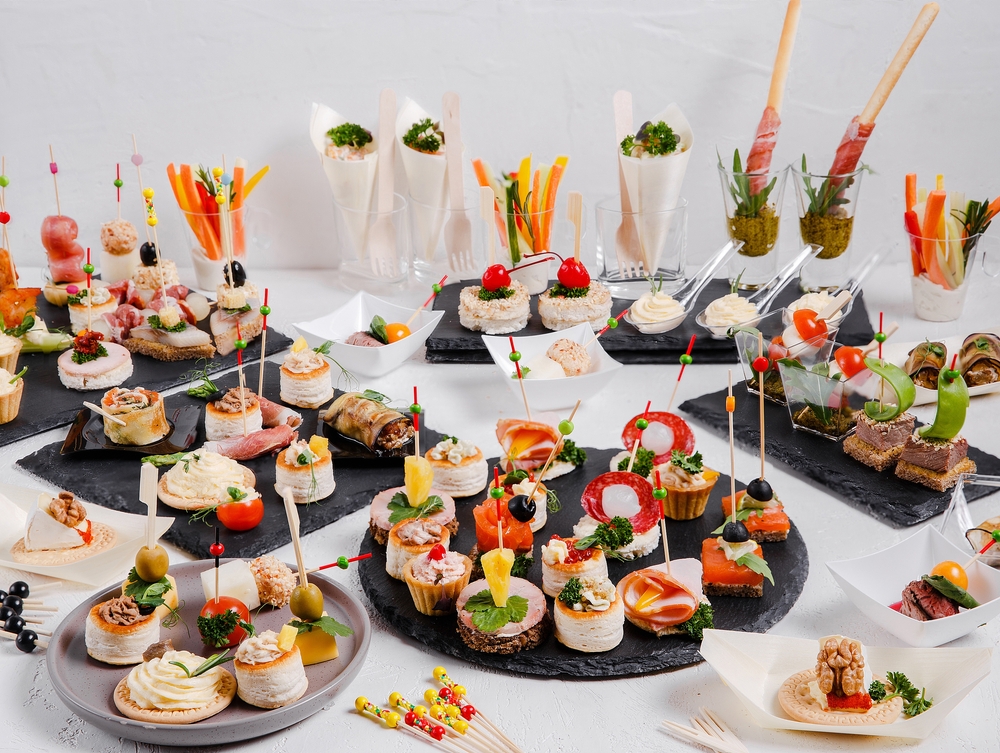Dining has developed into much more than just a means of subsistence in today’s culinary world. It has evolved into a fully immersive experience that stimulates all senses and creates deep bonds. At the vanguard of this culinary revolution are interactive dining experiences, which allow customers to actively engage with their food and go beyond the confines of traditional restaurant dining. The concept of interactive dining is changing the way we eat and engage with food. Examples include sensory deprivation experiences, interactive cooking classes, and inventive pop-up dinners.
Eating in the Dark: An Exhilarating Experience
One of the most fascinating and immersive interactive dining experiences available today is probably dining in the dark. These distinctive restaurants place customers in completely dark rooms and let them navigate their meals only by using their senses of taste, smell, touch, and sound. Dining in the dark enhances diners’ other senses by taking away their ability to see, making for a more intense and memorable culinary experience. As a result of the lack of visual distractions, diners are able to concentrate only on the tastes and textures of each dish, which fosters mindfulness and an appreciation for food.

Engaging Culinary Workshops: From Kitchen to Table
With interactive cooking classes, students can get their hands dirty and participate in the cooking process, providing a hands-on approach to culinary education. These classes, which are taught by seasoned chefs, offer priceless insights into ingredient selection, cooking methods, and flavor pairing. Along with picking up new culinary techniques, participants get to know other foodies and build a sense of community and companionship. Following the cooking, everyone comes together around the table to savor the products of their labor and forge enduring bonds over a delectable meal.
Molecular Gastronomy: The Interface of Science and Cooking
A cutting-edge culinary field called molecular gastronomy investigates the scientific underpinnings of food preparation and cooking. Chefs can push the boundaries of traditional cooking with creative and visually stunning dishes by utilizing techniques like spherification, foaming, and gelation. As they see common ingredients transformed into delectable works of art, diners are in for a multisensory treat. Molecular gastronomy creates a gastronomic experience that is truly unforgettable by stimulating the imagination and tantalizing the taste buds.
Immersion Pop-Up Dinners: Eating Outside the Box
Pop-up dinners are transient dining experiences held in unusual spaces, such as abandoned buildings, warehouses, rooftops, and art galleries. Often including themed menus, interactive acts, and imaginative décor, these immersive dining experiences whisk patrons away to another world for the duration of the meal. Pop-up dinners give guests the opportunity to escape the ordinary and partake in a unique culinary experience, whether it’s a futuristic sci-fi feast or a whimsical banquet inspired by fairy tales.
Experiences from Farm to Table: Getting Close to the Source
Farm-to-table dining establishments emphasize the value of using sustainable and locally sourced ingredients while celebrating the relationship between food and its source. Visitors might get the chance to tour farms, get to know the farmers, and even take part in foraging or harvesting. Back at the restaurant, chefs highlight the local flavors on seasonal menus, showcasing the fresh bounty. Farm-to-table experiences increase our appreciation of the food we eat and the people who grow it by creating a direct link between producers and consumers.
Interactive Snacking Menus: A Gastronomic Adventure
Interactive tasting menus present a carefully chosen assortment of appetizers or main courses that highlight the culinary skills and inventiveness of the chef. Unexpected flavor combinations, creative presentation techniques, and multisensory interactive elements are common features of these multi-course events. Every dish, from mouthwatering sorbets to tableside demonstrations, tells a tale and entices diners to take an active role in the culinary experience. Interactive tasting menus allow customers to experience food in novel and exciting ways, beyond just eating.

Conclusion
The way we interact with food is being revolutionized by interactive dining experiences, which transform meals into engaging and unforgettable adventures. These immersive experiences, which include eating in the dark, taking part in a hands-on cooking class, and indulging in a molecular gastronomy feast, pique curiosity about food and stimulate the senses. Interactive dining offers a genuinely remarkable experience that transcends eating in a world where eating out has become more than just a meal. Therefore, think about stepping outside of your comfort zone and going on an interactive culinary adventure the next time you’re looking for a unique dining experience.


